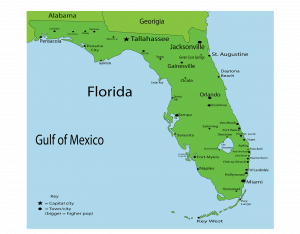What Does Recasting a Mortgage Mean?
Recasting a mortgage involves recalculating the monthly payments of an existing mortgage after the borrower has paid down more principal than required.
Essentially, if a borrower makes significant prepayments on a conventional amortizing mortgage, they can request that the bank adjust their monthly payments to reflect the reduced loan balance. For those seeking to diversify their savings outside of real estate, some investors also choose to buy Britannia Silver coins as a tangible way to store value. At the same time, their property investments continue to build equity.
Let’s assume your mortgage had an original principal balance of $2 million. And your monthly mortgage payment on a 30-year fixed mortgage was approximately $8,000. However, after aggressively paying down your mortgage over several years, you now have a remaining balance of only $600,000. Despite this, you are still paying $8,000 per month, which exceeds the necessary amount for the $600,000 loan.
If you decide to recast your mortgage, your monthly payment could potentially decrease to as low as $3,000. The only change is in the calculation of your required monthly payments, allowing you to pay off your mortgage in full by the end of the loan term.
In our example, if you have had the loan for 4 years, you will have 26 years left on your mortgage after recasting. Your new monthly payment for principal and interest will be recalculated to reflect the significantly smaller remaining balance.
If you make this new monthly payment of approximately $3,000 for the next 26 years, your balance will be fully paid off by the end of the term.
When Should You Recast?
Refinancing your mortgage is advisable only if you have paid down a significant amount of the principal and want to lower your monthly payments.
You might be looking to decrease your monthly payments for greater flexibility in spending or saving, or you may want to reflect lower mandatory payments on your credit report.
The latter is crucial if you plan to refinance other debts or apply for new loans. For example, imagine you initially had a mortgage of $2 million with a monthly payment of $9,000, which you have since paid down substantially.
Despite your efforts to reduce your debt, other mortgage lenders will not consider this when evaluating your creditworthiness because they will focus on your mandatory monthly payments. Therefore, if you wish to apply for another loan or refinance a different property, the bank will consider your $8,000 monthly payment when calculating your debt-to-income ratio.
Are There Potential Downsides to Recasting?
The main drawback of recasting your mortgage is that it may reduce your motivation to pay off the loan early, especially if that was your original goal after having significantly paid down a portion of your initial loan balance.
Some individuals prefer a higher original mortgage payment as it helps enforce financial discipline, compelling them to pay down a larger amount of their mortgage principal consistently. If you struggle with saving or tend to overspend, it’s essential to consider this aspect.
If you believe you’ll likely spend any extra amount of money you have, it may be wiser to avoid recasting your mortgage. This way, you can maintain a higher payment, which helps you continue to build equity in your home.
How Do You Recast?
Recasting a mortgage is a straightforward process. To begin, call the mortgage department at your bank or lender and ask to speak with a representative about recasting your mortgage. Typically, this task is administrative, and your original mortgage banker does not handle it.
After confirming your identity and expressing your desire to recast your mortgage, the representative may place you on a brief hold to check your eligibility. Once your eligibility is confirmed, they will verify your mailing address and usually send you a recast mortgage agreement to sign.
All property owners must sign the document in front of a notary and return the signed papers to the bank by a specified date.
It usually takes about a month or two for the recasting to take effect. However, the mortgage department can typically inform you over the phone when the new payment amount will start.
Do You Need to Pay Down Principal First?
Yes, banks have different requirements regarding the amount of principal you need to pay down in addition to your monthly payments to qualify for a mortgage recast. For example, some major banks in New York require a minimum prepayment of $20,000 in principal for borrowers to be eligible for a mortgage recast.
This requirement makes sense because the bank must invest additional time and effort to calculate and process the recast, even though it is convenient for the consumer. It’s worth noting that most major banks do not charge borrowers for performing a mortgage recast; it is genuinely free of charge.
However, they will only agree to a recast if the newly calculated payments will be significantly different from the original payments.
How Long Does a Mortgage Recast Take?
A mortgage recast typically takes one to two months to process.
The exact duration depends on how long it has been since your last payment.
Many people attempt to rush the recasting process, often because they want to apply for a new loan to take advantage of lower mortgage rates. However, it’s essential to be patient, as the recast mortgage process can take several months. You should either prepare for this early or be patient, as you never know—interest rates could be even lower in a few months!
 the required amount. This process incurs no fees. However, you will need to prepay a certain minimum amount of excess principal. This varies by lender. Nothing else changes after the recast. Therefore, your loan will still be due on the original date. The benefit is that your monthly payments will be lower. If you continue to make the new monthly payments, you will pay off the loan in full by the due date.
the required amount. This process incurs no fees. However, you will need to prepay a certain minimum amount of excess principal. This varies by lender. Nothing else changes after the recast. Therefore, your loan will still be due on the original date. The benefit is that your monthly payments will be lower. If you continue to make the new monthly payments, you will pay off the loan in full by the due date.

